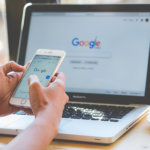
Be it photos, video clips or any other visual medium, the more appealing it is, the better it engages us. As human beings, throughout the evolutionary scale, we’ve been drawn to visual content.
If you aren’t already making extensive use of visual content in your posts and other digital marketing strategies, you are not fully tapping into all of your audiences. Visual content like GIFs, quotes, screenshots, infographics, videos, podcasts, datagraphs and presentations to name a few, is what an effective content marketing strategy revolves around. Use them to the right effect in each medium, while keeping your unique audience attributes in mind, and it can work wonders for your brand image.
Looking at Visual Content from an SEO Perspective
If you understand a thing or two about harnessing the power of visual content, you already know how it helps to better engage audiences and generate more leads as well as traffic to your pages.
Aside from engagement and higher web traffic, visual content helps you rank higher on search engines too, provided you’re using the right alt tags to drive more people to your website.
Visual marketing today forms the core of social media campaigns:
- 63% social media is made up of images
- Facebook updates with an image improves engagement by 2.3 times
- Tweets with images result in 150% more retweets
- Users read just 28% text on websites and focus on visuals instead
- 90% information processed in the human mind is visual
Here are five types of visual content that can boost your SEO efforts:
Extensive Use of Images
Photos make your website more shareable. When it comes to Google, visual content like infographics, charts, logos, banners and buttons can really help you rank high.
Choose the right images that compliment your product and services as well as your brand’s voice. Visitors need to know how your brand can make their lives easier, so here’s your chance to shine. Make sure all those images are titled using various keywords which you want to focus one. Use one or more keywords on those images, rather than using them all on one image.
Keep Updating That Blog
Blogging regularly boosts web traffic and branding while improving search engine visibility. If people are interesting in checking out your blog section, they would love to check out the rest of your website and the other way around. Our experience as a Toronto SEO company has shown the use of images and videos that speak to audiences about your product are always encouraged! Select keywords for these appropriately – you don’t want to go with the ones which are highly competitive, for example.
Pro-SEO Videos
Video is a powerful form of visual content – if it’s anything people love more than photos, its videos. They are inexpensive to produce, highly shareable and visually stimulating. It might take you a while to figure out what kind of videos help you rank better. Scoot on over to YouTube and see how your competitors are doing it, to get a fair idea. You can also check out websites of the top businesses in your niche.
Pinterest Can Help Too
Pinterest happens to be a superb way of creating themed boards where you can combine all your charts, graphics, photos etc. It’s a clever way to grouping all your visual content under one umbrella and using it as a hook so to speak, to pull a higher number of users to your home page. It also boosts your chances of getting ranked among the top ten Google keywords when people search for businesses like you.
Work on Those Infographics
You’re probably no stranger to infographics if you’ve been using Pinterest.
Infographics generate many links back to your website since it provides quick and highly relevant information at a glance, which is quite easy to share on social media. At the end, you’re looking at more shareable content, which means more traffic flooding in to your site.
Why Visual Content is Really Important to Your Content Marketing Efforts
Content marketing that leans heavily on visuals is far more effective than any other means of communicating with your audience. Marketers who are quick to embrace this concept see high rewards and returns in the form of more fans and followers, readers, clients, leads and more importantly, sustained revenue.
Psychologist Albert Mehrabian believes 93% of all communication is based on imagery. There’s a lot of truth to that actually. Take silent movies, for instance – despite the lack of dialogues, we react to body language instantly, which in turn, sparks our inner emotions. Charlie Chaplin didn’t make a name for himself for nothing!
Similarly, how you utilize the power of visual content affects how your business is perceived. Visual content fuels engagement, there’s no question about it. Still need hard evidence to back all this up? Consider this:
Graphics improve comprehension and retention
Visual cues help us remember more and remember it for longer
Our minds are capable of processing visual information 60,000 times faster compared to text
40% users react faster to one image then a thousand words
Facebook photos invite more interaction than links or text
Users tend to spend 100% more time on pages that have videos
Visitors watching product videos are 85% more likely to purchase
Infographic-rich posts lead to an average 12% better traffic
Pinterest singlehandedly generates more referral traffic compared to YouTube, Google+ and LinkedIn combined – Source
Start focusing on your visual content marketing now, if you aren’t already. And remember, being consistent and innovate through every step of your campaign is a prerequisite.
Visual Content Vs Text: Which is Better?
While it is recommended to use a good mix of text and visual content to market your brand, leaning too heavily on the former may not be the best strategy.
Even though there’s enough irrefutable evidence to justify the fact that visual-heavy content sells better, text cannot be eliminated from the equation altogether. After all, how you play with words, particularly keywords, has a market effect on how you rank on Google and how easily people find your web pages.
To conclude, use text to the point that it compliments your visual content, and doesn’t dominate in doing so. The bulk of your content marketing will still focus on visuals a lot more, so there’s really no clear winner here. Text helps as long as it play the role of supporting actor to all the great visual content you’ve put up on your website and social media pages. Use both to the right degree, and you’ll get the best of both worlds.
Common Elements of Visual Content and How to Successfully Integrate Them into Your Content Marketing Strategy
If you’re looking to keep your users better engaged around the clock, you need to really put your back into creating great visual content and know where to post it to get the best results. Keep the following in mind when executing your master plan:
The most popular websites today have breathtaking visuals. Social media networks are largely driven my visual content as well.
- Let’s kick things off with your blogs: add images right at the start. This simple move increases conversions while decreasing bounce rate and keeping readers engaged. It’s good to add images every 300 words or so. By cleverly inserting these visual breaks between ideas, you are keeping readers hooked for longer.
- When you add custom and stock images, screenshots, charts, infographs and other visual content, add alt tags. This simply makes it easy for search engines and users to find you.
- If you’re not already using SlideShare, you should. Owned by LinkedIn, SlideShare is currently being used by several million brands to share their unique knowledge and data. What better way to communicate with your audience and generate more leads? Remember to brand your slides appropriately, because you want people to instantly recognize and identify with your content. When you’re creating slides or for that matter, other types of visual content, don’t forget to add your company logo and create custom images to nicely round things off.
- Are you taking advantage of Pinterest and Instagram to fuel your visual content? These are two great ways of boosting ‘visual content output’ on your social media pages, as they allow for easy and convenient content distribution, which we’ve discussed in greater detail just down below. Both, which are used exclusively to share graphics and images, let you create a visual brand style. Brand engagement is extremely high on these platforms, so don’t miss out.
- To better spread brand awareness through visuals, you need to take advantage of Instagram’s ad program. It’s often not the easiest thing to engage customers on mobile devices; however, Instagram makes it seamless to increase visibility and interact with followers directly. Reveal your creative side while getting to better learn your audience’s unique attributes. Be authentic and make your brand highly personable. Use hashtags on all your social networks so that the desired user base can find you fast.
- Snapchat is ideal for marketing to the younger, more hip generation. Create visually compelling stories so that it’s easily consumable. Share snaps of your business events to give it more authenticity and authority. Snapchat is all about having fun with your community following. It’s more about engagement than measuring results.
- Use Pinterest to better engage audiences through content curation. Do this well and you can enjoy plenty of referral traffic which further helps in cementing your viral reach. Audience members will be more than happy to repin your content while interacting with you. Don’t hesitate to comment on these pins (or respond to comments you get) as it lets you build a more loyal following. Top Pinterest strategies are based on creating multiple boards that tie in with your “brand story”. Create engaging content and enjoy highly meaningful conversations with your customers.
- Tumblr happens to be an excellent social medium for visual storytelling. This is where you go around distributing multiple types of post among active users. To give your brand a better personality, focus more on pop culture-heavy visuals. Be creative and engaging, and let Tumblr give your brand a distinct voice and look of its own.
Case Study: Good Use of Banner Ads to Increase Page Visits
Even though banner ads haven’t been the most effective way to generate leads and sales, they’ve been around as long as the internet has. Online users are generally not very big fans of banners; however, let’s put aside the whole “one single best or worst way to promote business” banter for a moment.
The difference between what generally works and doesn’t is testing, and besides that, it can vary from business to business. For example, some marketers might ignore taking action and running ads on a specific platform. But that doesn’t mean you should do the same. In fact, in the process you might come across interesting and relevant findings.
A Dutch mail order company, Bakker-Hillegom did just that in their marketing campaign. The team possessed a rich and diverse content resources depository which helped people take better care of their gardens. Even though they had a web app, it wasn’t quite enough to reach their ideal audience. Given the fact that their resource pages are uber-helpful and unique, new as well as targeted visitors visited them often to check out content.
Visitors did find the content exciting and were spending plenty of time on the site, though the desired actions were not being taken: leaving comments, buying an item, subscribing to the email list etc. The Bakker team was quick to respond by designing banner ads and setting up an A/B split test. The first banner read “Top Deals”; users were redirected to Bakker’s top deals page where they were invited to enjoy discounts and buy useful products. The second banner pertained to a newsletter subscription.
This test was run on 8,000 visitors for 12 days; the goal was to redirect the most people to the “Top Deals” section, so that they spend more time on-site and better engage with the business. The information page along with the banner ads got 104.99% more visits to the “Top Deals” page and a statistical relevance of 99.9%.
Take-home: You can certainly use banner display ads to your advantage, as long as they are relevant to the offer and web page users are visiting. Design your graphics around that page, without making them too flashy or “salesy”.
Visual Content – Future Outlook
Google understand the impact visual content has on ranking. As a result, the number one search engine on the internet now factors in visuals much more heavily when it comes to ranking results.
It is quite clear that visual content is going to be a major part that fuels every business’s digital content marketing strategies. The statistics are a testament to this fact and marketers who are slow to adapt visual content into their marketing efforts will find themselves lagging far behind the social media marketing curve.
Visual Content Integrated the AOK Way
Whether you like it or not, content marketing is going to dominate in the years to come and visual content is going to be at the forefront throughout. You now understand some of the basics that go into creating compelling visual content, why it’s important and how it helps you bolster user engagement and leads.
AOK Marketing has been in the digital marketing industry for well over a decade and has helped many businesses successfully integrate visual content to fuel higher engagement, brand awareness and revenues. Get in touch with one of our experts at 1.888.566.2577 for a FREE consultation or contact us directly.
About The Author
Dave Burnett
I help people make more money online.
Over the years I’ve had lots of fun working with thousands of brands and helping them distribute millions of promotional products and implement multinational rewards and incentive programs.
Now I’m helping great marketers turn their products and services into sustainable online businesses.
How can I help you?






